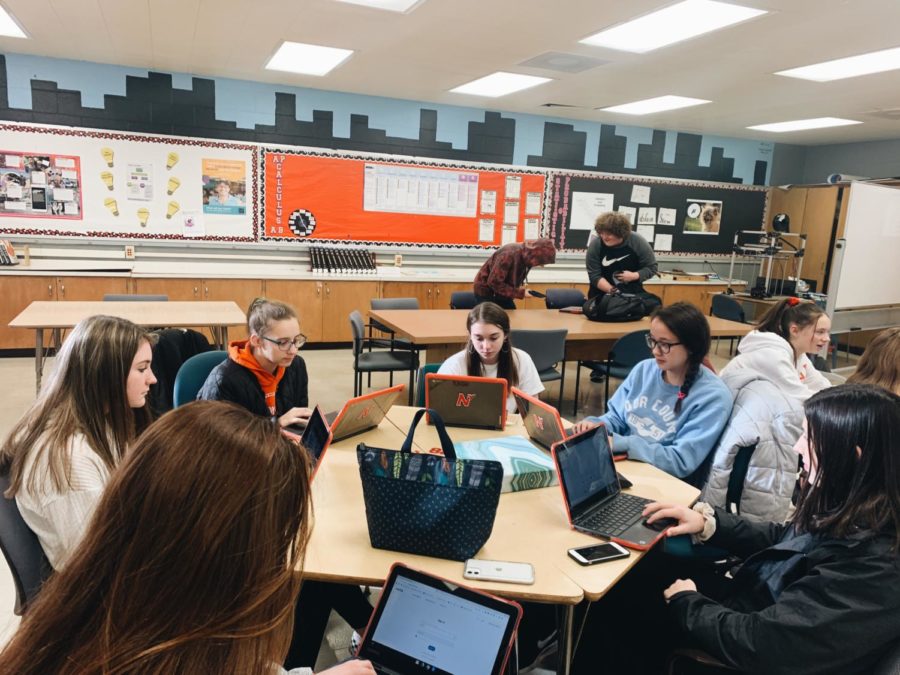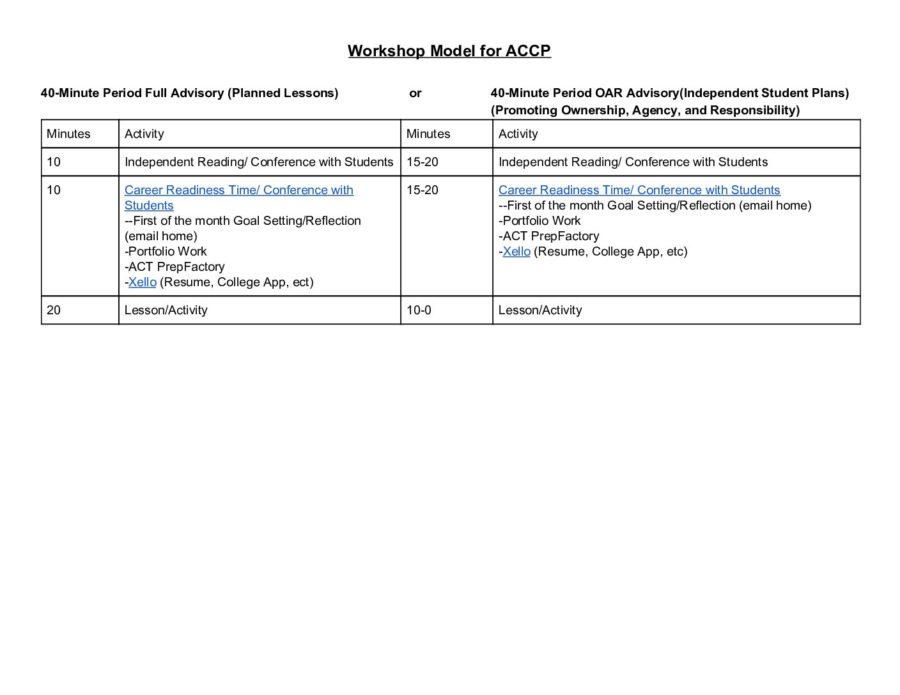Teacher’s Perspective on Advisory Differs From Grade to Grade
December 10, 2019
NHS added an AACP (Academic Advisement and Career Planning) period to this school year’s schedule changes, making an impact not just on students, but teachers as well, according to both upper and underclassmen advisers.

The first 40 minutes of the 90-minute break in the day is spent with an assigned advisory teacher and during the second half, students have the option to remediate targets or work on upcoming work with their teachers.
The intended advisory period begins with silent reading, then is followed by a mix of conferencing, grade checking, and various assigned presentations. While this format is evident in all classes no matter the grade, the timing and consistency vary.
In Mr. Chris Rundquist’s freshman advisory, the first 20 minutes are spent silent reading. Contradicting that, many senior advisory’s spend only five minutes with dedicated reading time if that. Consequently, the senior classes often have extended periods of free time while the freshman seems to always be busy.
If so much of senior advisory is spent with free time, it begs the question: What is the benefit?
“I don’t know at this point if all seniors see the value in what we are offering. I have taken that on

as a personal challenge to try and increase the relevancy, so students do find something
of value to take away,” senior adviser Mrs. Jennifer Heidl-Knobloch said when asked the benefit of the advisory period.
For seniors, advisory is comparable to broccoli, they are unable to look past the taste in order to reap the healthful benefits. Seniors and juniors are given the option to leave school the second half of AACP rather than meeting with a teacher of their choice. Many wonder if the release should be offered during the first half rather than the second half. Across the board, teachers agree the enrichment and remediation portion is currently serving more purpose for the student.
The freshmen are having a similar problem; with both freshman seminar and advisory, often times the materials become repetitive.
“Not that they are the same but they mimic each other sometimes,” freshman adviser, Chris Rundquist clarifies the overlap of freshman seminar and advisory.
Many freshman teachers feel they simply spend too much time, too much effort, and too much sanity with their students. After the 40-minute advisory period, a large percentage of the freshmen remain in their advisory classroom, resulting in freshman advisers spending upwards of 7 hours a week with their students.
Although many question the relevance of this additional period, administration feels it will leave a significant impact on the community of NHS. The student will remain with their advisory teacher throughout all four years of high school, hoping to develop a deeper connection with their specific teacher and others in their class. According to the Regional Education Labor Program, when students feel connected to their school dropout rates plummet.
Across all grade levels, teachers are thrilled to have the opportunity to develop personal relationships with their group of students. With the condensed schedule, many teachers struggled to do so. Advisory has the potential to drastically change how students and teachers interact. As time progresses, hopefully, these benefits become more evident.


